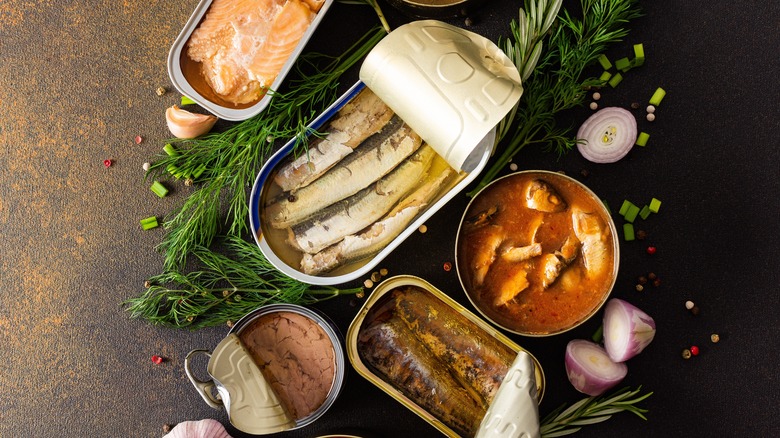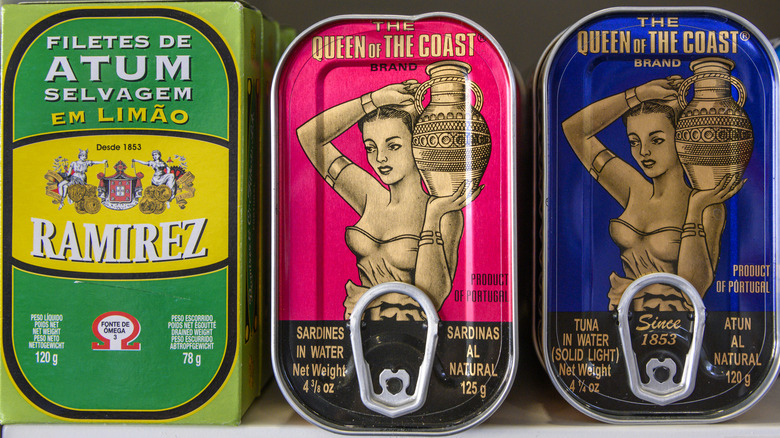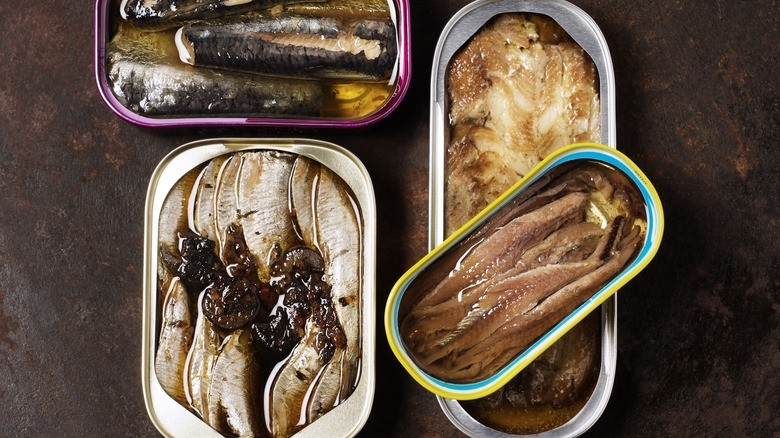Why Spain And Portugal Have The Best Tinned Tuna Around
Tinned fish is a staple in many people's diets — and for good reason. It's shelf-stable, often affordable, and easy to turn into a quick weeknight dinner or beach day sammie. But if you're all about canned tuna, you know that not every brand is created equal.
For foodies, tinned fish from Spain and Portugal is often considered the gold standard. These two countries have a long history of canning seafood to help preserve the mighty fishing hauls from their bountiful coasts. Because this fish is canned almost immediately after being caught, its freshness and quality are just as good as, if not better than, locally available seafood ... especially if you don't live by the sea yourself.
But more than that, what makes these conservas, as they are called in Spain and Portugal, truly spectacular, is how they are preserved. What you will often find in grocery stores in the U.S. is canned tuna packed in water, not oil, while the Spanish and Portuguese know that quality seasoning and oil should be a top priority.
Iberian tuna uses the best cuts and oil
Liquido de cobertura, or "covering liquid," is what fills up the rest of those small containers of canned fish. For Iberian tuna, this is usually olive oil, which helps the fish stay moist until the day your pan bagnat comes calling its name. Even American brands that sell canned fish in oil might be using vegetable oil, which lacks that distinctly rich Mediterranean flavor a little EVOO would provide. And while it is common for most canned fish to be steamed before canning, Iberian tuna might be cooked in seawater instead of tap, giving it a further infusion of briny ocean flavors.
The cut is also important. A lot of commercially produced canned tuna is made from the loin of the fish. But Iberian canned tuna is more likely to be made from the rich, fatty belly of the tuna, often sold as ventresca tuna. This tuna is often fished and packed by hand, to preserve its delicate texture, instead of allowing it to be potentially mangled in an industrial assembly line. This also has the benefit of reducing the product's environmental impact.
Other conservas to keep your eye on
If you do manage to get your hands on some tuna from the Iberian Peninsula, you might want to check out what other conservas might be available. Sardines, octopuses, scallops, cockles, cod, squid, baby eels, razor clams, and mussels are all common and often come with additional flavorings while tuna is often left unadulterated. Though if you find some spiked with mild Espelette pepper from the Basque region, don't pass it up!
Keep an eye out for conservas in Salsa Gallega, a Galician sauce with paprika and onion – and sometimes tomato. There's also escabeche, a garlicky paprika sauce that is tangy thanks to its vinegar base. Or perhaps you'd like some sardines packed with Padrón peppers, or squid preserved in its own ink. When it comes to conservas, the opportunities are endless. And once you've picked your poison, all you need to do is crack open that can, serve it with a side of crusty bread and some canned white beans to enjoy a taste of tapas at home.



